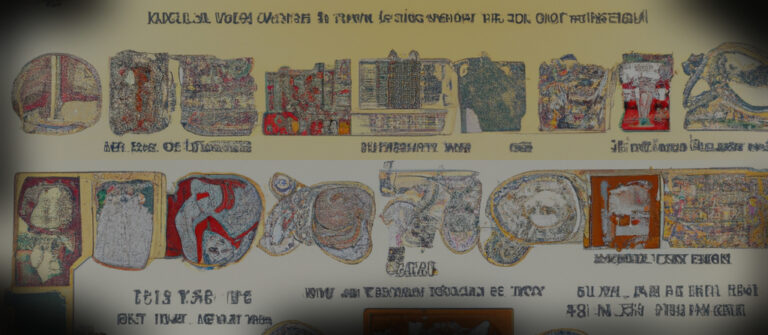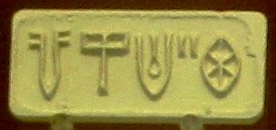By Chapter or Topic: All > Anchors > People > Docs > Touchstones > New Looks > History > Pre-Sumer
HISTORY Edition: This timeline encapsulates the history discussed within “30 Philosophers: A New Look at Timeless Ideas.” The following historical tidbits were used to bring context to the story of human thought.
30 Philosophers Timeline: History
Blue eyes emerging stands out as a striking example of a genetic mutation that spread across populations. Traced back to a single individual living between 6,000 and 8,000 BCE in the region near the Black Sea. The mutation involved is a specific change in the OCA2 gene, which alters the way melanin is produced in the iris. Originally, all humans had brown eyes, but this mutation led to the reduction of melanin in the iris, resulting in blue eyes.
Earliest known writing in Africa/Middle East zone.
Human DNA today is the same as 50,000 BCE. There is no doubt there were many dozens and perhaps thousands of civilizations prior to the Sumer civilization, but Sumer is the earliest known, or at least the earliest well known. The Sumer civilization first established between 6500 and 4100 BCE. We know quite a bit about the Sumerians because they immortalized their writing in clay tablets which will be around long after all the paper books on Earth right now have deteriorated. Sadly, we know almost nothing about prior civilizations because very little evidence survived the test of time. The Sumerians spoke and wrote Sumer and starting several millennia into their civilization they started immortalizing their culture on clay. They had an advanced democracy with elected officials, religion, art, wheel, math, philosophy, and language. The Cuneiform script was in use until 100 CE.
Earliest undeciphered writing in the Asian zone.
The Indus Valley script, emerging around 2600 BCE in one of the world’s earliest urban civilizations, remains one of archaeology’s greatest puzzles. Found across a vast expanse from today’s northeast Afghanistan to Pakistan and northwest India, this script comprises over 400 unique symbols, ranging from geometric shapes to plant-like and animal motifs. Inscribed on a variety of objects including seals, pottery, and metal tools, these markings suggest a sophisticated system of communication used for trade, administration, or ritual purposes.
Hinduism, one of the world’s oldest religions, emerged around 1100 BCE, several centuries after the Indus Valley Civilization collapsed. Hinduism has no known roots in the IVC, but it’s a topic to follow as we uncover clues. There was a several century gap from the collapse of the IVC to the rise of the early Vedic tradition, which might have adopted or been influenced by some imagery and cultural elements from the previous civilization in the area, but the writing skills were lost. Early Vedic tradition was based on oral traditions that predate the earliest known Vedic writings, which date back to around 550 BCE. The religion does not have a single founder and is a synthesis of various traditions. Today, Hinduism is centered around the Vedas, ancient sacred texts. As with all religions, it evolved through various phases, including the early Vedic period (circa 900-500 BCE) and was solidified to today’s Hinduism much later.
Creation date: 155 Trillion Years ago.
Hindu cosmology presents a cyclic model of the universe that undergoes periodic creation and destruction. Texts like the Puranas describe cycles of creation that span billions of years. According to some interpretations of Hindu scriptures, the current universe is about 155.52 trillion years old, and we are in the 51st year of the present Brahma, making it roughly 155.52 trillion years since the creation of the cosmos.
Some of my favorite Hindu sayings:
- Every day you should sit quietly and affirm, with deep conviction.
- You become that which you believe you can become.
- The entire universe is to be looked upon as the Lord.
In the vibrant intellectual climate of Ancient Greece, the 6th century BCE marks the embryonic stage of formal logic, attributed to the philosopher Thales of Miletus (around 624-546 BCE). Thales, recognized as the first of the Seven Sages of Greece, embarked on a quest that laid the foundational stones of logical thought. He shifted the explanation of natural phenomena away from mythological interpretations towards rational principles.
The Greeks knew the Earth is spherical. For example, Pythagoras (570-495 BCE), Aristotle (384-322 BCE), and Euclid (circa 450 BCE) wrote about the Earth as a sphere. Eratosthenes (276-194 BCE) even calculated the circumference of the Earth to within 1%. He also wrote about the idea that India could be reached by sailing westward from Spain.
Nearly 2,000 years later during the time Columbus sailed the ocean blue, most religious nuts believed the Earth was flat and he would fall off. What happened to truth? Although many educated people knew all along, the dogma of the brainwashed religious nuts over the centuries suppressed and terrorized the masses into believing things like the Earth is flat, the Earth is only a few thousand years old, women are property, and other such nonsense. The harm caused by formal religions over the eons is incalculable.
The story of the printing press is the story of cultural transmission. Invented in 1440 in Germany by Johannes Gutenberg, it revolutionized book production by introducing movable type. It replaced hand-copying, prone to errors, with movable metal type, allowing mass production of books for the first time in human history.
Over the next few centuries, the printing press went on to standardize writing like never before, including spelling and punctuation. Prior to the printing press, writing evolved spaces starting around 800 CE. By the invention of the printing press, we had punctuation pretty similar to today’s standard. About halfway, at the time of the Magna Carta in 1215, we still had mostly uppercase with spaces between words and an occasional period. Punctuation and spelling mostly standardized starting in the 1300s for the next century, just in time for the printing press.
Next >>
By Chapter or Topic: All > Anchors > People > Docs > Touchstones > New Looks > History > Pre-Sumer
















